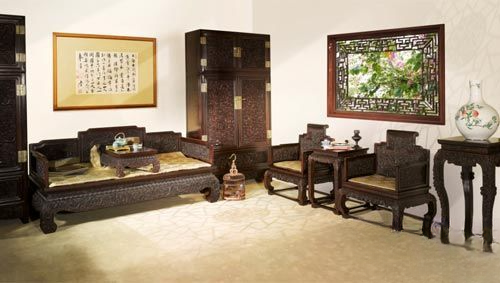Why is mahogany furniture so expensive?
Why is rosewood furniture so expensive? Friends often discuss this question, but there are different opinions. Some say it's the craftsmanship, others the culture...
Today, the Redwood Encyclopedia will talk about redwood materials. What are their advantages? Judging the quality of materials requires a comprehensive perspective. The following nine factors can be used as the criteria for identification:
Density, also known as "air-dry density," refers to the ratio of weight to volume when wood reaches equilibrium moisture content under certain atmospheric conditions. A higher air-dry density indicates heavier, harder, and stronger wood, making it a strength indicator. In terms of quality, a higher density is generally considered to be a better material.
Grease has always been an important indicator of the quality of a piece of wood. The higher the oil content of the wood, the smoother it feels to the touch. Grease makes furniture smooth, wear-resistant, and not prone to cracking. It is also the oil that protects the furniture's glossy finish.
There is a saying called "Yao Huang Wei Zi", which shows that yellow and purple have always been the most respected colors. Among all colors, yellow is the best, representing the dignity of the royal family; purple is second, and we often say "purple air coming from the east", which is a sense of wealth and prosperity of the ministers; and red is third, representing the prosperity of the people.
The quality of wood smell affects the quality of home furnishings. As classical furniture used in home, the selection of wood smell is very strict.
The texture of wood is directly reflected on the surface of classical furniture, affecting its external performance and internal charm.
The flexibility of wood directly affects the quality of furniture. The greater the flexibility, the more suitable it is for carving. Flexibility also affects the stability of furniture maintenance.
When buying furniture, consumers are most concerned about its stability. Some furniture may be very strong when first purchased, but after two or three years of use, it may begin to deform. This is because the furniture wood is not stable enough.
The so-called fineness of wood, in simple terms, is the feeling when touching it with your hands.
Among all rosewood materials, Hainan Huanghuali boasts the longest history of development and is the cornerstone of Ming-style furniture. In the late Ming Dynasty, red sandalwood began to be used extensively, gradually becoming the representative wood of Qing-style furniture. The use of big red sandalwood dates back to the mid-to-late Qing Dynasty. According to historical research, it only entered the historical arena in the 43rd year of the Qianlong Emperor's reign, during the latter part of his reign, as a replacement for the endangered red sandalwood and huanghuali. The wood properties of huanghuali and small-leaf red sandalwood also influenced the styles of Ming and Qing furniture. It was not until the emergence of big red sandalwood that classical furniture truly gained widespread popularity among the general public. From the perspective of historical and cultural heritage, huanghuali and red sandalwood stand side by side. Big red sandalwood also possesses a rich cultural heritage and historical significance, but its cultural influence is somewhat less pronounced.
